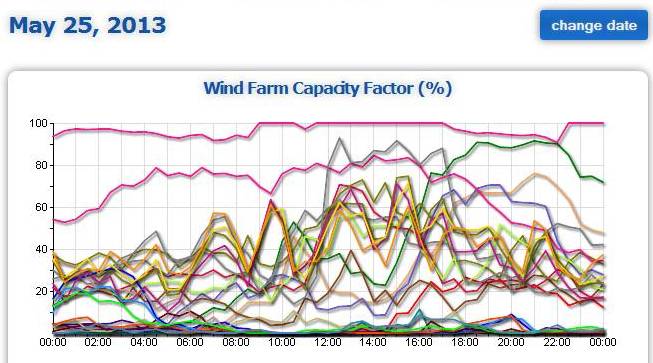|
Heath reported Boswell saying that "The wind farms only work 30 per cent of the time". This is a very similar claim to that made by the anonymous writer of Stop These Things, another of the organisers of the failed rally; Mr STT said "the average windfarm only produces energy about 25% of the time".
That this is quite false is shown by the the average South Eastern Australian wind farm having a capacity factor of 35%. That is to say, a typical 3MW wind turbine will, on average, generate about 1MW. Quite obviously, since there is a significant amount of time when it is running at less than full power, it must produce power much more than 30% of the time to achieve an average of 35% of its installed capacity.
It could be that Senator Boswell was thinking of capacity factor when he wrote about the proportion of the time that wind farms generate power; but even if he was, he was still wrong.
The graph above, which was from the data of the most recent full day available at the time of the claim on the STT net site, shows that of the 27 wind farms logged by the Wind Farm Performance site, most were generating most of the day. This is a typical day of wind farm operation.

